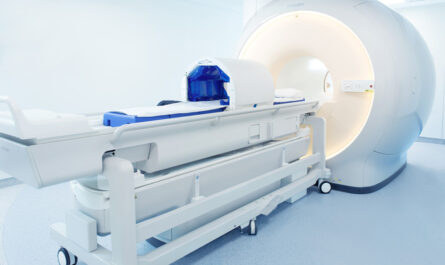The Intragastric Balloon Market is estimated to be valued at US$ 372.6 Million In 2023 and is expected to exhibit a CAGR of 9.6% over the forecast period 2023 – 2030, as highlighted in a new report published by Coherent Market Insights.
Market Overview:
An intragastric balloon is a nonsurgical weight loss procedure where a saline-filled silicone balloon is placed in the stomach through the mouth, allowing one to feel full sooner while eating. These balloons are usually placed by gastroenterologists under conscious sedation in their clinics using an endoscope and take about 15-20 minutes to be inserted. The balloons can stay in place for up to 6 months to help individuals lose weight by restricting food intake and decreasing appetite. They provide a minimally invasive solution for weight loss to those who cannot undergo bariatric surgery or need to lose weight before surgery.
Market Dynamics:
The increasing prevalence of obesity across the globe is expected to be a major driver for the growth of the global intragastric balloon market over the forecast period. Obesity has almost tripled since 1975 worldwide, with over 1.9 billion adults being overweight in 2016, out of which 650 million are obese according to the World Health Organization. Surge in bariatric procedures across hospitals and clinics to treat obesity is also fueling market growth. Rising adoption of intragastric balloons for weight management before bariatric surgeries is another factor propelling demand. Additionally, the development of technologically advanced balloons with retrieval sutures, biosensors, and compact designs that can stay longer in the stomach are gaining popularity and positively impacting the market expansion.
Segment Analysis
The Intragastric Balloon Market is dominated by single-balloon systems segment. This is because single-balloon systems are easier to insert and remove during endoscopic procedures as compared to dual-balloon systems, thereby experiencing higher adoption.
PEST Analysis
Political: Regulatory bodies like the FDA approve and monitor intragastric balloons to ensure safety and effectiveness. This ensures quality and drives market growth.
Economic: Rising obesity rates globally have increased healthcare costs. Intragastric balloons provide a relatively low-cost solution, supporting the market.
Social: Growing social awareness about risks of obesity and lifestyle diseases increases demand for weight loss treatments like intragastric balloons.
Technological: Advancements enable development of balloons that are more durable, comfortable and effective at weight loss. Some have wireless capabilities for weight monitoring.
Key Takeaways
The global intragastric balloon market is expected to witness high growth, exhibiting CAGR of 9.6% over the forecast period, due to increasing obesity prevalence worldwide. By 2030, the market is projected to reach a value of US$ 372.6 Million In 2023.
Regional analysis: North America dominates the market currently due to the high obesity rates and supportive reimbursement environment. Asia Pacific is expected to be the fastest growing region with rising medical tourism and access to treatment.
Key players operating in the intragastric balloon market include Allergan (Acquired by Abbott), Apollo Endosurgery, Reshape Medical, Helioscopie Medical, Spatz FGIA, Endalis, Districlass Medical, Lexal, Medicone, Obalon Therapeutics, Silimed, Medsil, ReShape Lifesciences, EndoArt, MedSil, Silimed and Medsil. Allergan is a leading player based on its portfolio of single and dual balloon systems.
*Note:
- Source: Coherent Market Insights, Public sources, Desk research
- We have leveraged AI tools to mine information and compile it




